The Regina Cyclone of 1912
On June 30, 1912, at approximately 5 p.m., one of the most severe tornados documented in Canada struck the city of Regina. Rated as F4 on the Fujita scale (devastating, with winds of 331-417 km/h), the tornado – often referred to as the “Regina Cyclone” – formed about 18 km south of the city and travelled north, through several farmsteads before reaching Regina. Upon entering the city, the tornado tore through residential neighbourhoods, businesses, warehouse areas, and rail yards, resulting in 28 deaths, hundreds of injuries and $1.2 million in property damage (in todays money that would be the equivalent of $485 million dollars). The tornado travelled a reported 12 km further north of the city before dissipating.
In the aftermath of the Regina Cyclone, approximately 2,500 people were left homeless and many downtown buildings were damaged or destroyed, including the newly-built central library, the Y.M.C.A. and Y.W.C.A., the Metropolitan Methodist Church, the Knox Presbyterian Church, the C.P.R. Freight Depot and the Telephone Exchange. Most of the city buildings and houses were rebuilt within the following year, though the loans taken out by the city and its residents to finance the rebuilding effort took almost 40 years to repay.
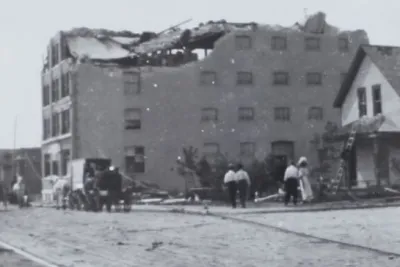
Ackerman block on Dewdney Street. PAS Photo R-A265-19.
Photos of the Aftermath
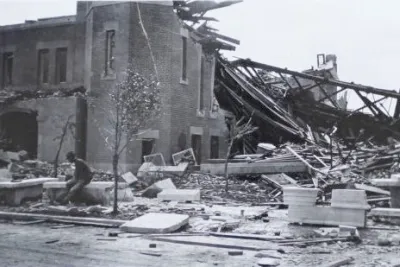
North side of Metropolitan Church after the cyclone. PAS Photo R-A265-23.
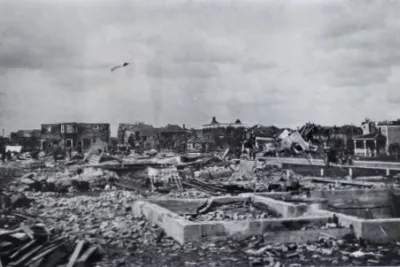
Corner of Lorne Street and 13th Avenue after cyclone on June 30, 1912. Looking northeast. PAS Photo R-A265-29.
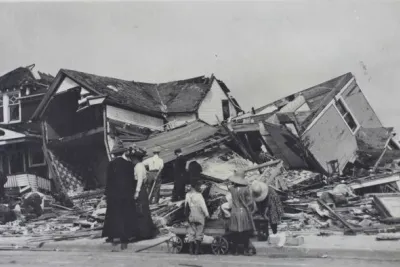
Houses on street (possibly 11th Avenue) damaged by cyclone. PAS Photo R-A6675-13.
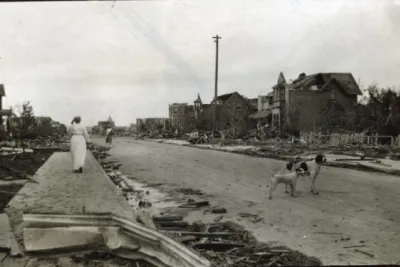
View of Lorne Street, following the cyclone; two dogs can be seen on the road, as well as two unidentified women walking. PAS Photo RA-26933.

What was left of Government Telephone Exchange, situated at 1700 block, east side of Lorne Street, after the cyclone, June 30, 1912. PAS Photo R-A265-24.
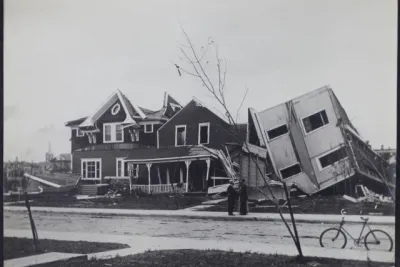
Three damaged houses on a residential street in Regina, following the tornado on June 30, 1912. PAS Photo R-A2840-19.

View of damage in rail yard after the cyclone, including overturned building of Winnipeg Elevator Co. Ltd. PAS Photo R-A26148.
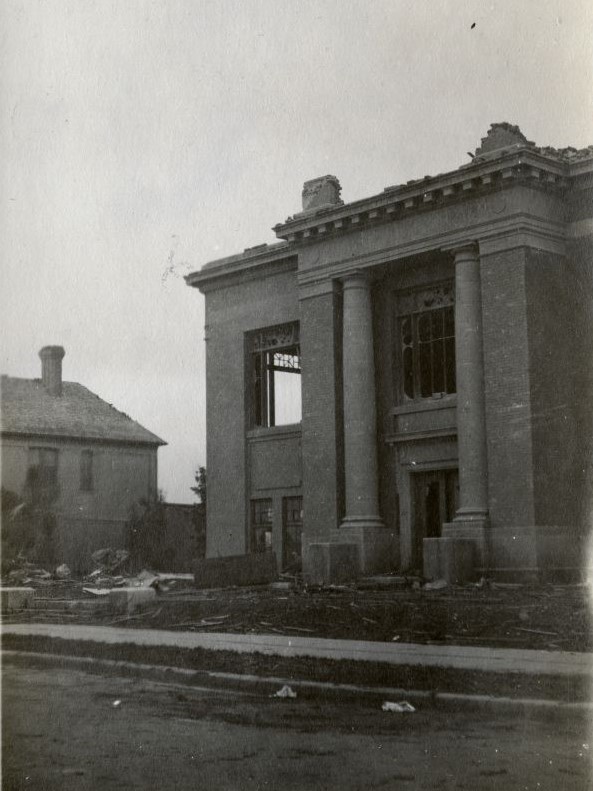
been officially opened just six weeks prior,
on May 11, 1912. PAS Photo R-A33229-13.
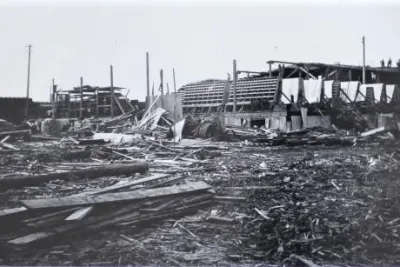
Part of the warehouse section of the city, on the north side after the cyclone. June 30, 1912. (Rumsley Products Co., Agricultural Implements, 1341 Rose Street.). PAS Photo R-A265-28.
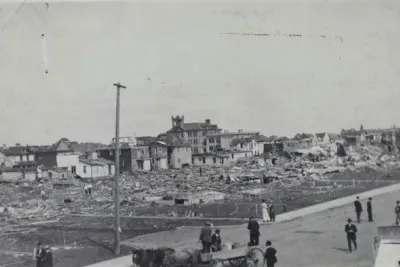
View from Albert Street and 11th Avenue. PAS Photo R-A6675-6.
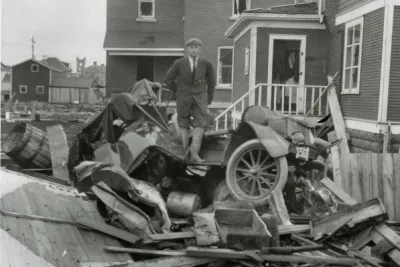
Unidentified man with a damaged car, in front of house. Photography by John “Jack” McKay. PAS Photo R-A26152.